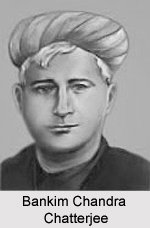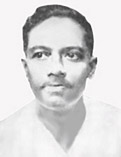 Origin of Bengali Literature can be traced back to more than hundred years in the 7th century with three development periods namely: ancient, medieval, and modern; the ancient period ranging from 650-1200, medieval period from 1200-1800, and the modern period from 1800 to the present. The Bengali literature originated from the classical Indo-Aryan Sanskrit language and literature. The cults originated before the Muslim conquest. Behind the resurgence of Hinduism in the sixteenth, seventeenth, and eighteenth centuries their role was instrumental. They provided the subject-matter for Bengali literature in the Gaur and Nadiya periods. These were non-Aryan, anti-Brahmanic and opposed the prevalent caste system especially the lower sections of the population. They were called laukik.
Origin of Bengali Literature can be traced back to more than hundred years in the 7th century with three development periods namely: ancient, medieval, and modern; the ancient period ranging from 650-1200, medieval period from 1200-1800, and the modern period from 1800 to the present. The Bengali literature originated from the classical Indo-Aryan Sanskrit language and literature. The cults originated before the Muslim conquest. Behind the resurgence of Hinduism in the sixteenth, seventeenth, and eighteenth centuries their role was instrumental. They provided the subject-matter for Bengali literature in the Gaur and Nadiya periods. These were non-Aryan, anti-Brahmanic and opposed the prevalent caste system especially the lower sections of the population. They were called laukik.
Ancient Phase of Bengali Literature
While the history of Bangladeshi and Bengali literature goes back hundreds of years, it is impossible as well as inseparable to separate the literary trends of the two Bengals during the pre-independence period. Post independent Bangladesh has given birth to its own distinct set of litterateurs and literature. The earliest available specimen of Bengali literature is about a thousand years old. During the mediaeval period Bengali literature developed considerably with the patronage of Muslim rulers, particularly Sultan Alauddin Hussein Shah, his son Nasrat Shah and commander-in-chief, paragal khan, in promoting Bangla literature is especially noteworthy. The 45-year rule of the Hussein Shah dynasty (1493-1538) in Bengal not only led to political, social and cultural prosperity, but also nurtured bangla language and literature.
A new culture arose before and after the Muslim conquest. This folk culture witnessed emergence of laukik deities as well as Bengali was the emergent vernacular. As the orthodox Brahmanism declined, it gave new culture an opportunity to grow. Bengali literature concurrently found room to grow in the gap. The classical renaissance in the fifteenth and sixteenth centuries nurtured the shoots of the young Bengali literature. The history of Bengali literature in the nineteenth century was a fight between the conservatism of the Pandit and the radicalism of the westernized writer.
 Several Muslim poets were Chand Kazi (15th century) and Afzal Ali (17th century). Chand Kazi was the Kazi of Nabadwip under Sultan Hussein Shah (1493-1519). Syed Sultan (c 1550-1648, Nabi Bangsha , Shab-i-Miraj , Rasulbijay , Ofat-i-Rasul , Jaykum Rajar Ladai , Iblisnama , Jnanachautisha , Jnanapradip , marfati gan , padavali), Sheikh Paran (c 1550-1615, Nurnama , Nasihatnama ), Haji Muhammad (c 1550-1620, Nur Jamal , Suratnama ), Nasrullah Khan (c 1560-1625, janganama , Musar Sawwal , Shariatnama , Hidayitul Islam ), Muhammad Khan (c 1580-1650, Satya-Kali-Vivad-Sangbad , Hanifar Ladai , Maktul Husein ), Syed Martuza (c 1590-1662, Yog-Kalandar , padavali), Sheikh Muttalib (c 1595-1660, Kifayitul-Musallin ), Mir Muhammad Shafi (c 1559-1630, Nurnama , Nurkandil , Sayatnama ), Abdul Hakim (c 1620-1690, Lalmati-Sayfulmulk , Nurnama ). Poets who composed between 1600 and 1757 include nawajis khan , Qamar Ali, Mangal (Chand), Abdul Nabi, Muhammad Fasih, Fakir Garibullah, Muhammad Yakub, Sheikh Mansur, Muhammad Uzir Ali, Sheikh Sadi and Heyat Mamud. Syed Sultan`s Nabibamsa, Muhammad Khan`s Maktul Husein and sheikh chand `s Rasulbijay are known as Islamic Puranas.
Shah Muhammad Sagir (c 1400) was one of the earliest of the Bengali Muslim poets. Though his romance Yusuf-Zulekha contains no signature piece identifying him, he is generally regarded as being from East Bengal as copies of his poems have been found in the Chittagong-Comilla-Tripura region. Other epic poets include Jainuddin, Muzammil, Sheikh Faizullah, Daulat Uzir Bahram Khan. Jainuddin became famous with Rasulbijay , his only epic. Muzammil became famous mainly for his three poetic works: Nitishastravarta, Sayatnama and Khanjancharita.
In the period of 1700-1800 the main literary productions of the period include padavali and mangalkavya. Padavali Padavali writers in the 18th century include Narahari Chakravarti, Natavar Das, Dinabandhu Das, Chandrashekhar-Shashishekhar and Jagadananda. Their poems were, however, more full of ornamentation than meaning. Mangalkavya Versions of Chandimangal continued to be composed, an important version being that by Ramchandra Yati written 1766-67.
Bharat chandra , perhaps the greatest poet of the 18th century, wrote Nagastak and Gangastak in Sanskrit and, in Bangla, Satyanarayaner panchali , Rasamanjari as well as Annadamangal. Some other poets of this genre were Radhakanta Mishra (perhaps the first poet of Kolkata), Kavindra Chakravarti and Nidhiram Acharya of chittagong. The first Bangla books were those by Christian missionaries. Dom Antonio`s Brahmin-Roman-Catholic-Sangbad, for example, was the first Bangla book to be printed towards the end of the 17th century.
Several Muslim poets were Chand Kazi (15th century) and Afzal Ali (17th century). Chand Kazi was the Kazi of Nabadwip under Sultan Hussein Shah (1493-1519). Syed Sultan (c 1550-1648, Nabi Bangsha , Shab-i-Miraj , Rasulbijay , Ofat-i-Rasul , Jaykum Rajar Ladai , Iblisnama , Jnanachautisha , Jnanapradip , marfati gan , padavali), Sheikh Paran (c 1550-1615, Nurnama , Nasihatnama ), Haji Muhammad (c 1550-1620, Nur Jamal , Suratnama ), Nasrullah Khan (c 1560-1625, janganama , Musar Sawwal , Shariatnama , Hidayitul Islam ), Muhammad Khan (c 1580-1650, Satya-Kali-Vivad-Sangbad , Hanifar Ladai , Maktul Husein ), Syed Martuza (c 1590-1662, Yog-Kalandar , padavali), Sheikh Muttalib (c 1595-1660, Kifayitul-Musallin ), Mir Muhammad Shafi (c 1559-1630, Nurnama , Nurkandil , Sayatnama ), Abdul Hakim (c 1620-1690, Lalmati-Sayfulmulk , Nurnama ). Poets who composed between 1600 and 1757 include nawajis khan , Qamar Ali, Mangal (Chand), Abdul Nabi, Muhammad Fasih, Fakir Garibullah, Muhammad Yakub, Sheikh Mansur, Muhammad Uzir Ali, Sheikh Sadi and Heyat Mamud. Syed Sultan`s Nabibamsa, Muhammad Khan`s Maktul Husein and sheikh chand `s Rasulbijay are known as Islamic Puranas.
Shah Muhammad Sagir (c 1400) was one of the earliest of the Bengali Muslim poets. Though his romance Yusuf-Zulekha contains no signature piece identifying him, he is generally regarded as being from East Bengal as copies of his poems have been found in the Chittagong-Comilla-Tripura region. Other epic poets include Jainuddin, Muzammil, Sheikh Faizullah, Daulat Uzir Bahram Khan. Jainuddin became famous with Rasulbijay , his only epic. Muzammil became famous mainly for his three poetic works: Nitishastravarta, Sayatnama and Khanjancharita.
In the period of 1700-1800 the main literary productions of the period include padavali and mangalkavya. Padavali Padavali writers in the 18th century include Narahari Chakravarti, Natavar Das, Dinabandhu Das, Chandrashekhar-Shashishekhar and Jagadananda. Their poems were, however, more full of ornamentation than meaning. Mangalkavya Versions of Chandimangal continued to be composed, an important version being that by Ramchandra Yati written 1766-67.
Bharat chandra , perhaps the greatest poet of the 18th century, wrote Nagastak and Gangastak in Sanskrit and, in Bangla, Satyanarayaner panchali , Rasamanjari as well as Annadamangal. Some other poets of this genre were Radhakanta Mishra (perhaps the first poet of Kolkata), Kavindra Chakravarti and Nidhiram Acharya of chittagong. The first Bangla books were those by Christian missionaries. Dom Antonio`s Brahmin-Roman-Catholic-Sangbad, for example, was the first Bangla book to be printed towards the end of the 17th century.
Second phase of Bengali literature:
Raja Rammohan Roy (1772/4-1833) also contributed to the further development of Bangla prose. Some of his well-known books are translations: Vedanta Grantha (1815), Vedantasar (1815), Kenopanisad (1816) and Ishopanisad (1816). His original books include Bhattacharyer Sahit Vichar (1817), Gosvamir Sahit Vichar (1817), Sahamaran Virodhi Pustika , Sahamaran Visay (1828) , Gaudiya Vyakaran ( 1833) etc. The main themes of these books are religious and didactic. The first modern Bangla novelist was Bankimchandra Chatterjee (1838-1894) whose fourteen novels include Durgeshnandini, Kapalkundala, Krishnakanter Will, Bisbrksa and Ananadamath.
Prominent among them were Mir Mosharraf Hossain (1847-1912), Moulvi Mohammad Naimuddin (1832-1907), Dad Ali (1852-1936), Kaikobad (1857-1951), Sheikh Abdur Rahim, Reazuddin Ahmad Mashadi, Mozammel Huq, Munshi Muhammad Reazuddin Ahmad (1862-1933), Moulvi Mearajuddin Ahmad (1852-1929), Munshi Muhammad Zamiruddin (1870-1930), Abdul Hamid khan Yusufzai (1864-1924) and Maulana Mohammad Moniruzzaman Islamabadi (1875-1950). Mir Mosharraf Hossain wrote nearly 30 books including novels, plays, Satire, poetry, musical plays, and essays. His best known writing is, however, Bisad-Sindhu , based on the incidents at Karbala.
The first Bangla biography of Prophet Muhammad (Peace be upon him) was written by Sheikh Abdur Rahim. Michael Madhusudan Dutt (1824-1873) began writing in English but soon moved to writing in Bangla by his English readings.
In 1890-1930, Rabindranath Tagore was an extraordinary man who made major contributions to all genres of Bangla literature. He wrote an immense range of rich and varied forms of poetry, plays, dance dramas, novels, short stories, essays and over two thousand songs. Although he was popularised `Vishvakavi` (world poet) and won the Nobel Prize for literature in 1913 for his book of poems Gitanjali. The most popular novelists of this period was Sharat chandra Chatterjee (1876-1938), Pramatha Chowdhury (1868-1946), Probhat Kumar Mukhopadhyay (1873-1932), Achinta Kumar Sengupta, Buddhadev Bose, Premendra Mitra, Jibanananda das (1899-1954), Sudhindranath dutta (1901-1960), Bishnu de (1909-1982), played the pioneering role in introducing ultra-modernism in Bangla poetry.
In the period of 1947-1971 well known writers were Mohammad Najibar Rahman (1860-1923), Ekramuddin ahmad (1872-1940), Roquiah Sakhawat Hossain (1880-1932), Kazi Imdadul Huq (1882-1926), Shahadat Hossain (1893-1953), Golam Mostafa (1897-1964), Abul Hussain (1896-1938), Kazi Abdul Wadud (1894-1970), Mohammad Akram Khan, Dr Muhammad Shahidullah (1885-1969), Dr Muhammad Lutfar Rahman (1889-1936), S Wazed Ali (1890-1951), Ibrahim Khan (1894-1978), Nurunessa Khatun Vidyavinodini (1894-1975), Sheikh Muhammad Idris Ali (1895-1945), Akbaruddin (1895-1979), Mohammad Barkatullah (1898-1974), Abul Kalam Shamsuddin (1897-1978), Qazi Motahar Hossain, Abul Mansur Ahmed (1898-1979), Benajir Ahmed (1903-1983), Abul Fazal (1903-1983), Motaher Hossain Chowdhury (1903-1956), Muhammad Mansuruddin (1904-1987), Abdul Quadir (1906-1984), Bande Ali Miah (1906-1979), Mahmuda Khatun Siddiqua (1906-1977), Habibullah Bahar Choudhury (1906-1966), Mahbub-ul Alam (1906-1982), Dr Muhammad Enamul Huq, Sufi Motahar Hosen (1907-1975), Begum Sufia Kamal (1911-1999) and Raushan Yazdani (1917-1967).
The liberation war of 1971 and the independence of Bangladesh mark the third phase of the literature of this region. The fiction of this phase records the saga of the liberation war, the hellish face of the war, the dream of a free and egalitarian Bangladesh and thereafter the realization of independence.
Bengali literature sprung from the classical and indigenous sources. Since its earliest beginning it lived a second hand life on materials that were entirely derived from Sanskrit. However its physical nourishment was drawn from the classical source but remained indigenous in nature. It did not acquire the adult and civilized consciousness, the high culture and intellectuality of the Sanskrit language. The essential spirit always remained dark and mystical, semi-conscious and semi-pronounced. It was religious, musical, emotional and communal. It lived in the village and was confined within the limited range of ideas and experience of village people. It possessed the simplicity, freshness and charm of its genre.



















